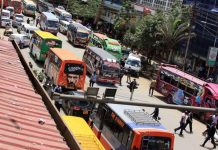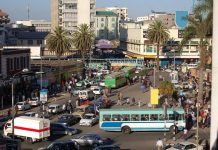Like any other lending institution, China Exim Bank is tough when it comes to negotiating a loan.
Didn’t we all see it during negotiations for the first standard gauge railway when the Chinese lender demanded that the Kenya Ports Authority and Kenya Railways Corporation be made to sign a so-called ‘take or pay agreement’ before they could agree to ink the deal?
The aim of the take or pay agreement the Chinese lenders demanded was to force and tie KPA’s hands into allocating to the SGR enough cargo so as to protect the new railway line from competition by roads and to ensure that the business would be profitable.
To make the ‘take or pay agreement’ document legally binding, the Chinese lenders also demanded that the agreement and rights under the ‘take or pay agreement’ document be pledged to China Exim Bank as part of the security package for the loan we had borrowed.
We argued that cargo coming into Mombasa belonged to individuals and that KPA did not have the powers to force its customers to use the SGR.
DEAL BREAKER
We also argued that KPA and KRC were autonomous institutions, and that obliging KPA to deliver to KRC specified volumes of cargo would be unworkable.
All these arguments fell on deaf years as the Chinese lenders insisted that the ‘take or pay agreement’ was a deal breaker.
The ‘take or pay agreement’ is why critics of the government charge that we have mortgaged Mombasa Port to the Chinese and that, like Sri Lanka, we risk surrendering the port if we fail to pay.
This past weekend, State House came out with a strongly-worded statement stating that the extension of the standard gauge railway was not on the agenda of President Uhuru Kenyatta’s recent meeting with the Chinese President.
The statement was meant to correct media reports that had created the impression that the Chinese had rejected the President’s request for the funding of the extension of the SGR from Naivasha to Kisumu and Malaba.
NEGOTIATION
What State House said may very well be the case. Having signed a commercial agreement with the Chinese EPC contractor several months ago, we were now at the state of negotiations with Exim Bank of China.
We all know that presidents don’t negotiate with banks. But the government must take the flak for building public expectations by dropping loud hints on every occasion and suggesting that signing of the loan deal for extending the SGR to Kisumu and Malaba was a foregone conclusion.
As far back as last August, the government was saying that this was a done deal.
I went to the archives and found a statement by Cabinet Secretary James Macharia in August last year announcing at a meeting of the Architectural Association of Kenya that everything was in place and that the deal would be signed on the sidelines of an international meeting in China that was to take place in September of that year. It did not happen.
What is delaying the signing of this deal? What is the deal breaker?
CARGO
We are not as transparent as Uganda on SGR issues. Indeed, the Ugandans have a dedicated website for the SGR with updates on the latest developments.
Methinks that the Chinese lenders have introduced conditions the government is finding politically unpalatable to implement.
We still remember how, in line with the conditions on the first SGR loan, the government was forced to make the unpopular decision of literally forcing importers to move their cargo to Nairobi through the SGR instead of trucking their freight.
Today, many importers murmur that they still find using the road cheaper. Container Freight Stations are almost dead, forced to come up with new business models.
Indeed, it was the pressure and conditions set under the Chinese loans that forced the government to introduce a railway development levy.
In the medium term, I see Chinese lenders pushing the government to implement even more policies to improve SGR’s financial sustainability.
FEES
Major interventions to shift traffic from road to rail may be in the offing.
It should not surprise if we see introduction of road user fees for freight truckers, regulations on truck sizes and weight limits.
I see the government being lobbied to put more investment in the metre gauge and to make it serve as feeder to the SGR.
And, there will be pressure on the government to build intermodal platforms along the SGR, along the lines of what Uganda is planning to build in Naivasha on the piece of land recently donated by President Kenyatta.
And, there will be pressure on the government to start economic activity and industrial development projects along the line.
The proposed Naivasha Special Economic Zone may see the light of day — at last.
SOURCE: nation.co.ke






![Top 20 Used Cars to Avoid Buying in Kenya – [PHOTOS]](https://kenyacarbazaar.com/blog/wp-content/uploads/2013/11/top-used-unreliable-cars-to-avoid2-356x220.jpg)



![Here are some of the best tuned cars in kenya by state of the art garages [PHOTOS]](https://kenyacarbazaar.com/blog/wp-content/uploads/2013/11/29402_10151301757042065_340470732_n-e1384498044289.jpg)


![Top 20 Used Cars to Avoid Buying in Kenya – [PHOTOS]](https://kenyacarbazaar.com/blog/wp-content/uploads/2013/11/top-used-unreliable-cars-to-avoid2-100x70.jpg)






